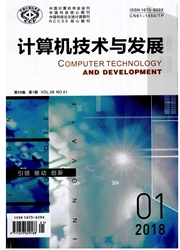

 中文摘要:
中文摘要:
针对传统迭代算法在解决大规模问题时速度较慢的问题,在介绍了压缩感知中重构的基本模型以及传统不动点迭代方法(FPC)的基础上,提出了一种新的重构算法-快速不动点迭代方法(FFPC)。传统的不动点迭代方法其实是基于算子分裂的方法。为了提高去重构性能,通过引入软阈值和正则化参数的双收缩,逐步迭代恢复原始图像信号,以加快算法的收敛速度,减小重构误差,从而改善图像的重构质量。仿真结果表明,在相同的实验环境下,与传统的不动点迭代算法以及其他算法相比,快速不动点迭代算法重构图像的峰值信噪比较高,相对误差较小,在低采样率下运行时间较少,性能最优。
 英文摘要:
英文摘要:
Due to the low convergence rate of traditional iterative methods for solving large-scale problems, a fast fixed point continuation method is proposed after introducing the reconstructed models and the traditional fixed point continuation methods. This method, which brings in soft threshold shrinkage and regularization parameter shrinkage, restores inmge signals by gradual iteration in order to speed up the convergence rate and improve the quality of restored images. Simulation results show that compared with traditional fixed point contin- uation methods, it makes Peak Signal to Noise Ratio (PSNR) of the reconstructed image higher and the relative error smaller, and reduces running time when the sampling rate is low.
 同期刊论文项目
同期刊论文项目
 同项目期刊论文
同项目期刊论文
 期刊信息
期刊信息
